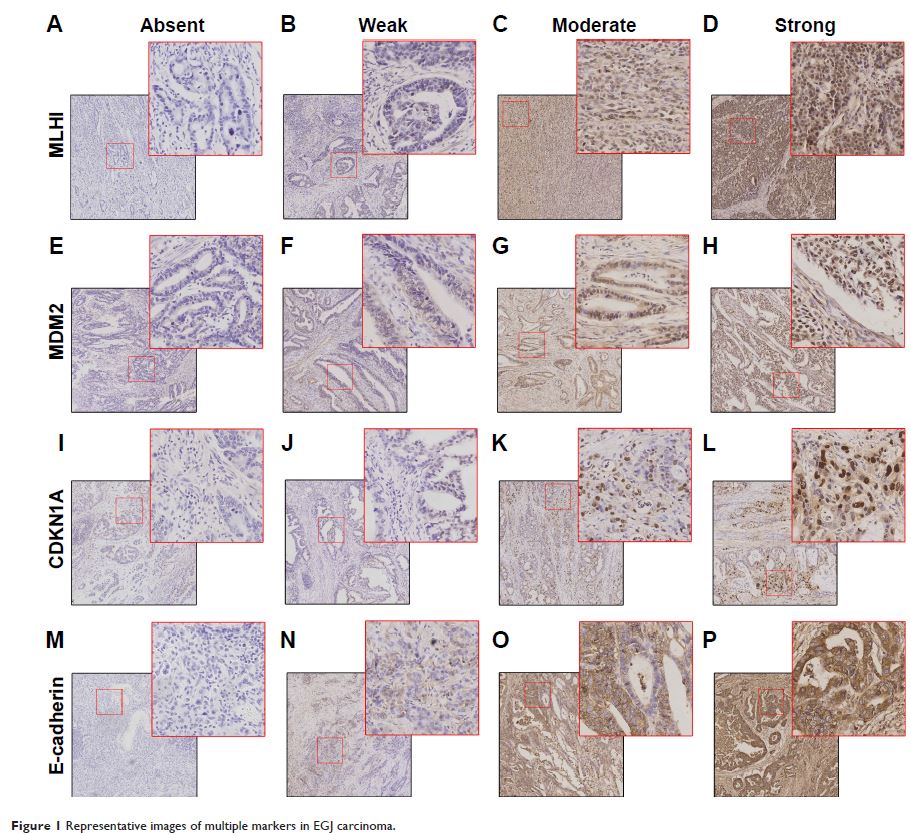108384
论文已发表
注册即可获取德孚的最新动态
IF 收录期刊
- 3.4 Breast Cancer (Dove Med Press)
- 3.2 Clin Epidemiol
- 2.6 Cancer Manag Res
- 2.9 Infect Drug Resist
- 3.7 Clin Interv Aging
- 5.1 Drug Des Dev Ther
- 3.1 Int J Chronic Obstr
- 6.6 Int J Nanomed
- 2.6 Int J Women's Health
- 2.9 Neuropsych Dis Treat
- 2.8 OncoTargets Ther
- 2.0 Patient Prefer Adher
- 2.2 Ther Clin Risk Manag
- 2.5 J Pain Res
- 3.0 Diabet Metab Synd Ob
- 3.2 Psychol Res Behav Ma
- 3.4 Nat Sci Sleep
- 1.8 Pharmgenomics Pers Med
- 2.0 Risk Manag Healthc Policy
- 4.1 J Inflamm Res
- 2.0 Int J Gen Med
- 3.4 J Hepatocell Carcinoma
- 3.0 J Asthma Allergy
- 2.2 Clin Cosmet Investig Dermatol
- 2.4 J Multidiscip Healthc

预后相关的食管胃结合部癌分子分类
Authors Zou L, Wu Y, Ma K, Fan Y, Dong D, Geng N, Li E
Received 9 July 2017
Accepted for publication 18 August 2017
Published 25 September 2017 Volume 2017:10 Pages 4765—4772
DOI https://doi.org/10.2147/OTT.S145912
Checked for plagiarism Yes
Review by Single-blind
Peer reviewers approved by Dr Akshita Wason
Peer reviewer comments 2
Editor who approved publication: Dr Yao Dai
Abstract: A novel molecular classification of gastric cancer by the Asian
Cancer Research Group (ACRG) is a potential advance in diagnosis and treatment,
and it helps to determine prognosis. The use of immunohistochemistry (IHC)
rather than gene expression analysis to determine tumor subtypes was evaluated
with the aim of determining the feasibility of using the ACRG molecular
classification. A total of 69 esophagogastric junction (EGJ) carcinomas were
classified as microsatellite instable (MSI, 17.40%, 12 of 69), microsatellite
stable with markers of epithelial-to-mesenchymal transition (MSS/EMT, 18.84%,
13 of 69), microsatellite stable with active tumor protein 53 (MSS/TP53+, 27.53%, 19 of 69), and microsatellite stable with
inactive TP53 (MSS/TP53-, 36.23%, 25 of
69). The molecular classification did not significantly correlate with anyone
of the clinicopathological characteristics of the EGJ carcinoma patients,
including age, gender, depth of tumor invasion, the presence of lymph node
metastasis, histologic grade, and p-TNM stage of the American Joint Committee
on Cancer (P >0.05). Kaplan–Meier survival
analysis and log rank tests showed that molecular classification, histologic
grade, p-TNM stage, and postoperative adjuvant chemotherapy were significantly
associated with overall survival (OS; P <0.05). MSI
tumors had the best overall prognosis followed by MSS/TP53- and MSS/TP53+. MSS/EMT tumors
had the worst overall prognosis. Multivariate analysis revealed that histologic
grade (hazard ratio [HR] =2.216, 95% CI =1.202–4.086), p-TNM stage (HR =2.216,
95% CI =1.202–4.086), and molecular subtype (HR =2.216, 95% CI =1.202–4.086)
were independently associated with OS. The preliminary results suggested that
the ACRG molecular classification may be a valuable independent prognostic
marker for EGJ carcinoma patients and could be performed by IHC analysis.
Keywords: molecular
biology, gastroesophageal junction, microsatellite instable, MDM2,
immunohistochemical staining, survival
